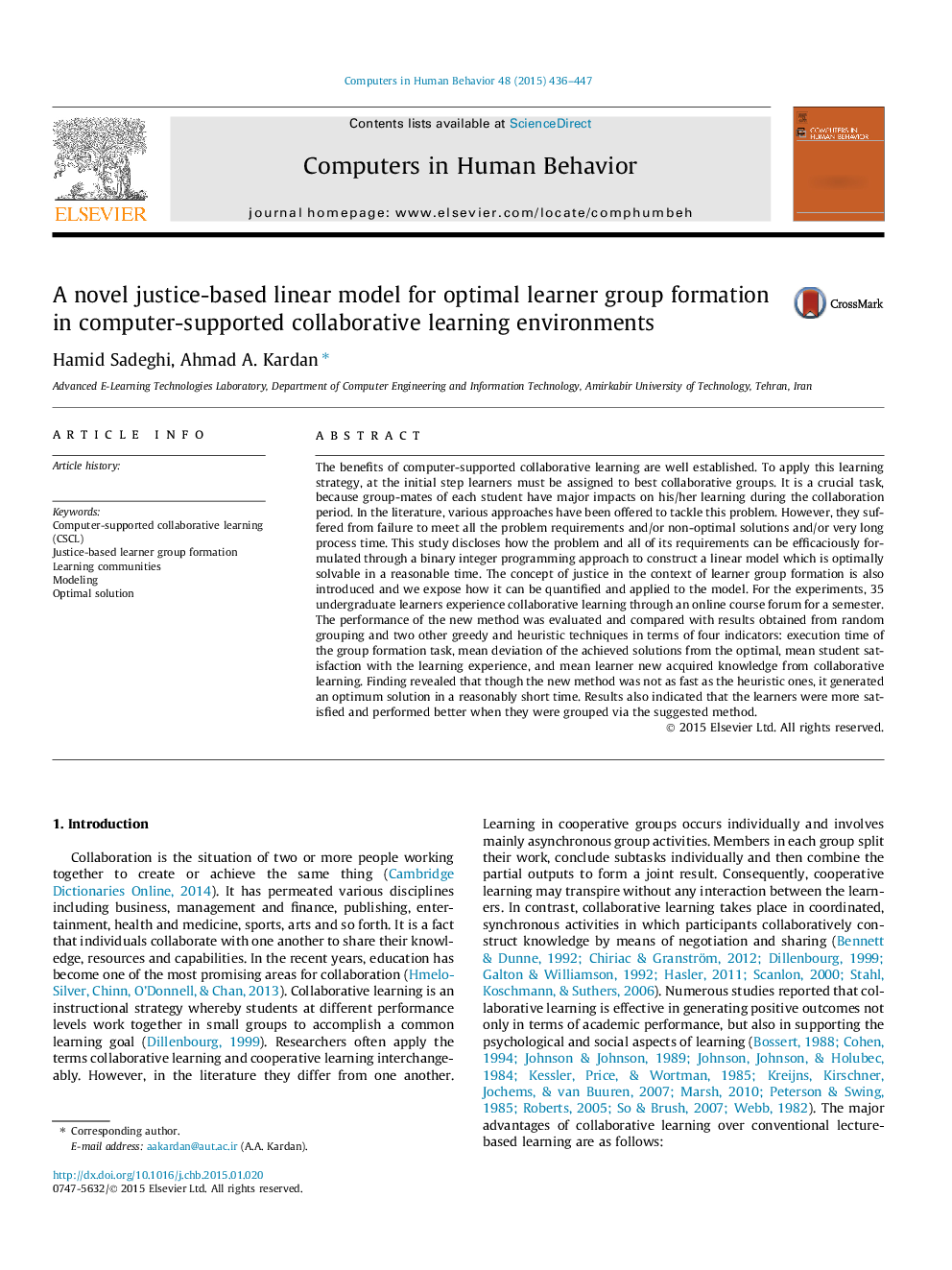| Article ID | Journal | Published Year | Pages | File Type |
|---|---|---|---|---|
| 6838397 | Computers in Human Behavior | 2015 | 12 Pages |
Abstract
The benefits of computer-supported collaborative learning are well established. To apply this learning strategy, at the initial step learners must be assigned to best collaborative groups. It is a crucial task, because group-mates of each student have major impacts on his/her learning during the collaboration period. In the literature, various approaches have been offered to tackle this problem. However, they suffered from failure to meet all the problem requirements and/or non-optimal solutions and/or very long process time. This study discloses how the problem and all of its requirements can be efficaciously formulated through a binary integer programming approach to construct a linear model which is optimally solvable in a reasonable time. The concept of justice in the context of learner group formation is also introduced and we expose how it can be quantified and applied to the model. For the experiments, 35 undergraduate learners experience collaborative learning through an online course forum for a semester. The performance of the new method was evaluated and compared with results obtained from random grouping and two other greedy and heuristic techniques in terms of four indicators: execution time of the group formation task, mean deviation of the achieved solutions from the optimal, mean student satisfaction with the learning experience, and mean learner new acquired knowledge from collaborative learning. Finding revealed that though the new method was not as fast as the heuristic ones, it generated an optimum solution in a reasonably short time. Results also indicated that the learners were more satisfied and performed better when they were grouped via the suggested method.
Keywords
Related Topics
Physical Sciences and Engineering
Computer Science
Computer Science Applications
Authors
Hamid Sadeghi, Ahmad A. Kardan,
